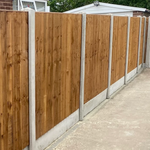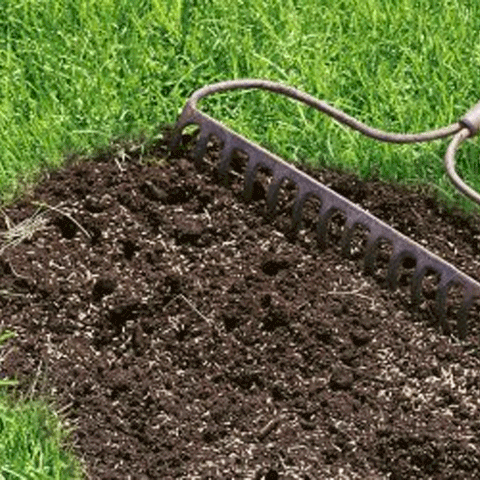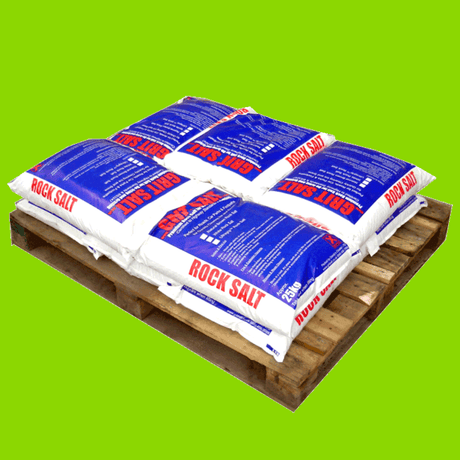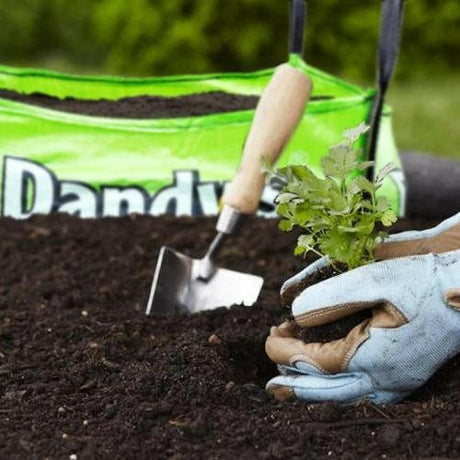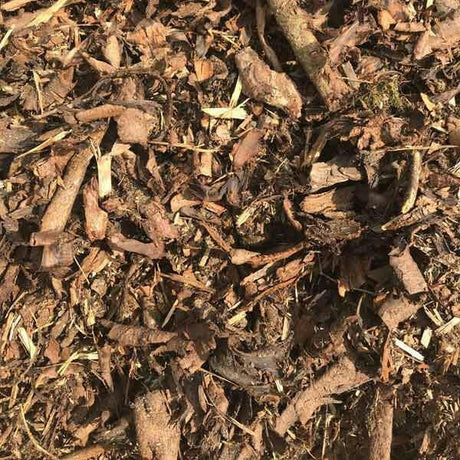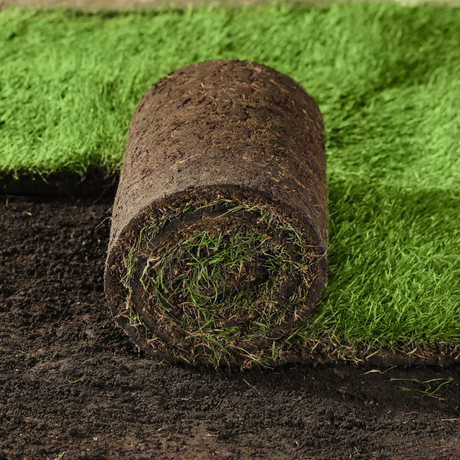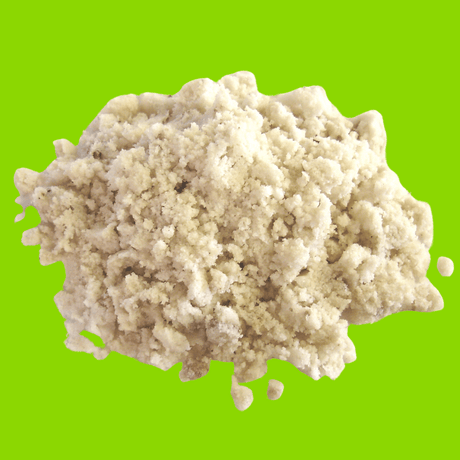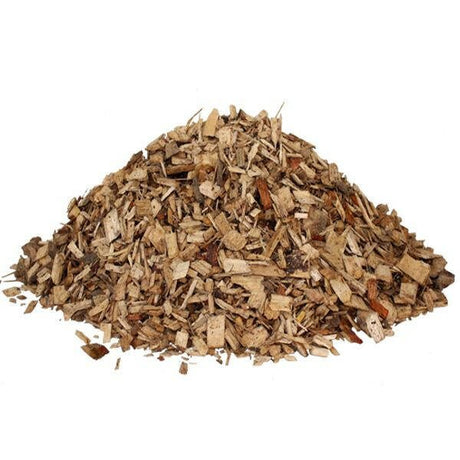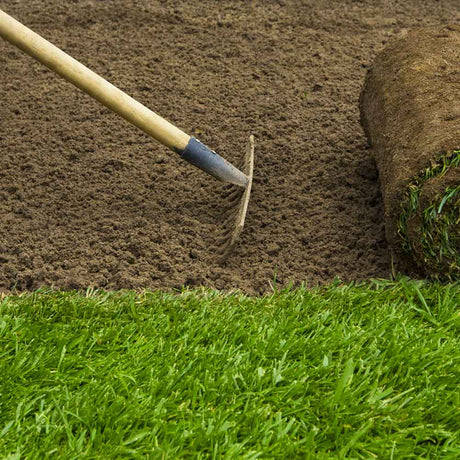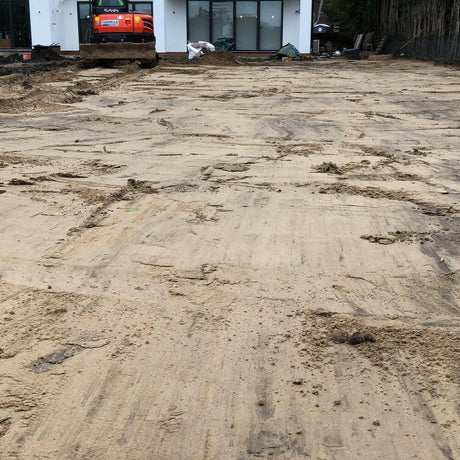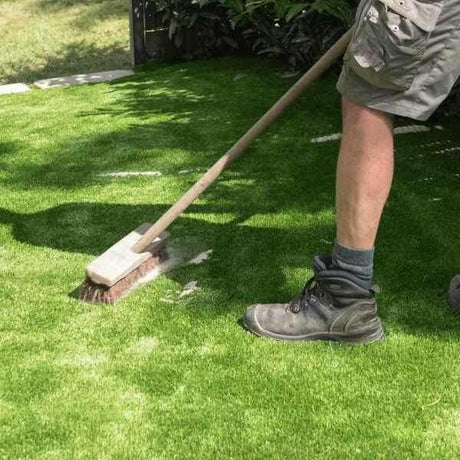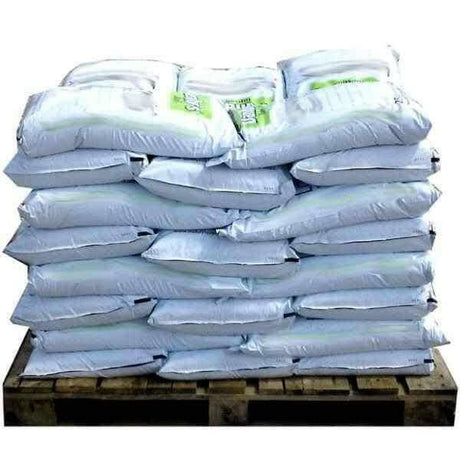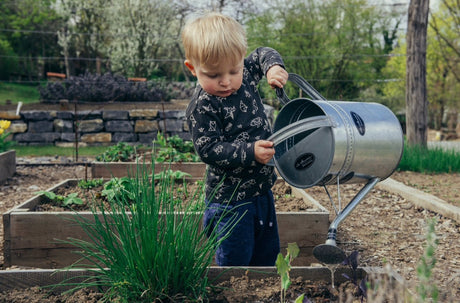Topdress and over-seed...
Our Topdressing is a 70/30% blend of screened silica sand and topsoil, screened down to about 3mm, making it perfect for working in-between existing grass blades and down to the roots. This is especially useful technique to use on sparse lawns.
- You Dandy's Hardwearing Grass Seed to over-seed bare patches and for general lawn feeding brush the topdressing over your grass at a depth of 1-2mm. We find a garden brush is perfect for this. Make sure you have raked the lawn first to break up the surface and remove any moss, leaves and weeds.
- Sow the seed at a rate of around 10 - 15 gms per m2 and lightly rake into the surface - this also helps to avoid birds and rodents eating your seed! If birds are a problem you may wish to add a net over your lawn until the seed germinates.
- Give the seed a good water with a sprinkler. You should see new growth in around 10 days!
Scarifying...
Scarifying with a machine or rake removes thatch from lawns for improved topdressing and re-seeding. Thatch is a layer of a combination of living and dead plant matter including crowns, stolons, rhizomes, and roots, that accumulates on a lawn around the base of the grass plants
Heavy raking or scarifying will thin the lawn leaving soil exposed in many places. This makes an ideal seed bed not only for over-seeding with new and improved grass seed. By scarifying in September you will avoid the bulk of the years weed seeds too.
Patch repair...
For areas where the grass is completely bare you will add a fresh topsoil and either seed or lay turf. Here at Dandy's we sell our Organic Lawnmix Topsoil in small bags, making it perfect for jobs like this.
When patch repairing ensure you rake or fork into the existing soil to remove any hard surface or weeds. Add a thin layer of fresh topsoil and rake into the surrounding lawn so that it knits in tightly.
If cutting turf for this patch don't forget the turf could be 25 - 50mm thick so you may need to dig into the area first!
Sow your seed and rake through into the surrounding before giving it a good sprinkling of water.
Turf is a living thing and so it is unfortunately susceptible to pests and disease and in order to thrive it requires a good maintenance scheme and proper aftercare.
If mushrooms pop up on your new lawn don't worry. Mushrooms love dark, humid areas and the gap between your new turf and the topsoil is perfect for them to thrive. Once your lawn is established enough to be cut you can see them off with your lawnmower.
Weeds are a fact of life and if you've got good topsoil and quality turf then you may find some weeds popping up here and there; if weeds won't grow then nothing will, so you can take the appearance of the odd dandelion as a sign that you're doing a good job.
All of Dandy's products are natural and organic so although we supply weed free goods, we don't chemically treat anything. It's up to you how you see the weeds off but we prefer to pull them and let the grass re-grow or just see them off with the mower. If you do buy weed killer then make sure you do the proper research and follow the directions supplied with it to the letter. You can of course buy sterilised weed-free topsoil and treated turf but you might also have garden visitors in the shape of insects and birds dropping seeds here and there too so ultimately, it won't be sterile forever!
Mow...
Don't mow your lawn until it is properly rooted in, usually around a couple of weeks - check by pulling back a corner of turf; if it's rooted in you won't be able to without some real force and you'll feel the roots tearing if you do manage it.
Only mow when the grass is completely dry and do so with nice sharp mowing blades, only taking off around a third of the height of the blades of grass and make sure that you collect and remove the clippings to prevent them from smothering your growing lawn.
The quickest and sure fire way to get that lush green lawn is to lay a new one using our Hardwearing Lawn Turf!
Keep it well watered. Usually twice a day for the first week or so; once in the morning and once in the evening. Going into Autumn you can reduce this to once every few days depending on the natural rainfall, then down to once a week if there is no rain (which is very unlikely!).
Plan ahead. Try to get your ground prepared a day or two before you collect or have your turf delivered. Ideally you want to get it laid and watered straight away so don't leave it rolled up while you are spreading and levelling topsoil.
WATERING
New turf needs to be rolled out/laid and watered within a max period of 1 hour - this is for the best results as turf is a living thing.
Usually new turf will need to be watered twice a day for the first week, two or three times a week for the following fortnight and then, if it has started to root in sufficiently you can drop to once a week or so.
You need to ensure you are watering the roots and not just the blades of grass; to do this you will need to dig a small hole to see how long the roots are and ensure that enough moisture is getting to them. Turf grows quickly so you should check root length regularly - the soil should be moist and cool, not soaking or completely dried out.















